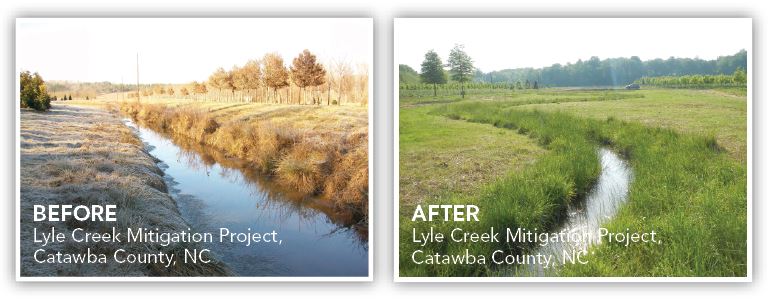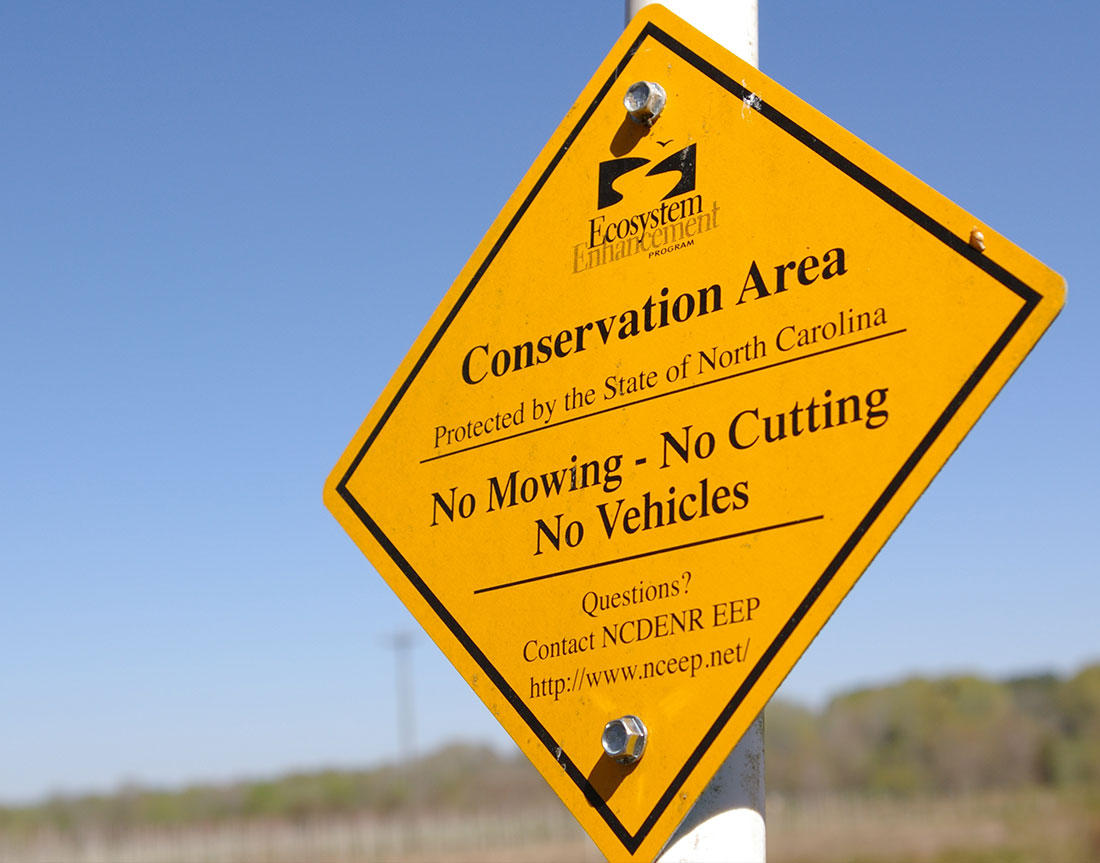
Landowner Information
Wildlands Engineering is a fully licensed engineering firm specializing in water resources management and ecological restoration, with offices in North Carolina, South Carolina, and Virginia. We are an experienced team of biologists, ecologists, engineers, and real estate professionals. Unlike some of our competitors, we not only invest our own capital in full-delivery projects, but also perform all of the design, permitting, and monitoring in-house. Wildlands Engineering has been awarded over $103 MILLION in turn-key/full delivery contracts for clients such as the North Carolina Division of Mitigation Services, Charlotte-Mecklenburg County Storm Water Services, South Carolina Department of Transportation, Virginia Department of Transportation, and Maryland State Highway Association.
We work with the landowner during the project proposal stage, coordinate site access during the survey phase, and have frequent meetings during the design phase to make sure any landowner concerns are being addressed. We will review the conservation easement language and location with the landowner to make sure future land use plans are not impeded. We work closely with the contractor and the landowner during the construction process and are attentive to any maintenance needs during the monitoring phase, after the project is complete.
Wildlands Engineering staff will see the project through from the first stages to the last. This continuity and single line of communication means that the landowner always knows who to call for an update on the project.
What is stream and wetland restoration?
 Stream restoration uses “natural channel design” techniques to restore heavily eroded or ditched streams to a more natural state. Wetland restoration restores natural hydrologic conditions to a wetland system that has been ditched, drained, and cleared. Techniques, such as removing drain tiles, filling drainage ditches, site grading, and raising ditched stream bed elevations are used to accomplish specific goals of the project. Native grasses, shrubs, and trees are planted to create a buffer to reduce and absorb pollutants and nutrients from surrounding fields or development. Each project is designed to address the site-specific challenges of that stream channel and its watershed, while working within the constraints of the site.
Stream restoration uses “natural channel design” techniques to restore heavily eroded or ditched streams to a more natural state. Wetland restoration restores natural hydrologic conditions to a wetland system that has been ditched, drained, and cleared. Techniques, such as removing drain tiles, filling drainage ditches, site grading, and raising ditched stream bed elevations are used to accomplish specific goals of the project. Native grasses, shrubs, and trees are planted to create a buffer to reduce and absorb pollutants and nutrients from surrounding fields or development. Each project is designed to address the site-specific challenges of that stream channel and its watershed, while working within the constraints of the site.
Where does the work take place?
The client requests proposals for mitigation projects in specific river basins. The client evaluates current and planned impacts from the DOT and private developers, then issues requests for proposals in a specific river basins where the development or roadway projects are planned. Ideal sites for restoration are where streams have been straightened or moved, wetlands have been ditched or drained, livestock is not fenced out, or nutrients from surrounding agriculture are entering the water supply due to insufficient buffers.
What is a conservation easement?
 Conservation easement must be placed on the stream corridor, or wetland area to protect the mitigation work from impacts, such as agriculture, cattle, or timber harvesting. This easement lasts in perpetuity, has no restrictions on the surrounding land, and does NOT allow the general public to access the site. Wildlands Engineering employees will need to access the easement periodically for seven years to conduct monitoring surveys.
Conservation easement must be placed on the stream corridor, or wetland area to protect the mitigation work from impacts, such as agriculture, cattle, or timber harvesting. This easement lasts in perpetuity, has no restrictions on the surrounding land, and does NOT allow the general public to access the site. Wildlands Engineering employees will need to access the easement periodically for seven years to conduct monitoring surveys.
How long does a project take?
- The client releases a request for proposals, which has a fixed deadline for project submittals.
- After submittal, it takes four to six months for awards to be announced.
- After notification of an award, the survey and design phase takes about one year to complete and at that time the easement option is converted to a purchase.
- Construction and planting is completed the following winter.
- Finally, the site is monitored for seven years to make sure that the stream or wetlands are stable and healthy.
Wildlands Engineering is eager to talk more about the potential opportunities that your land may have.


